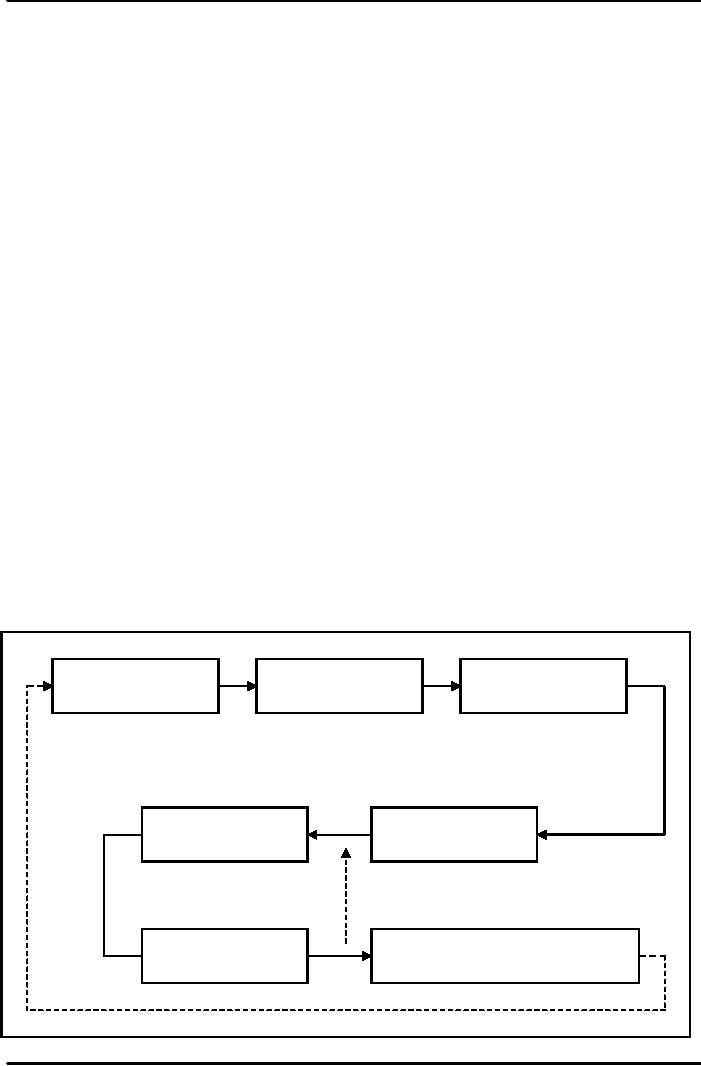 |

Introduction
To Public
AdministrationMGT111
VU
LESSON
22
HUMAN
RESOURCE MANAGEMENT
(HRM)
At the
end of the lecture the students
will be able to understand the
following:
-
Concept
of Staffing (Human Resource
Management)
-
Importance
of HRM to the organization
-
Process
of HRM
What
is Human Resource
The
most important resource of
any organization is the human resource.
All organizations
have
three
important resources. These
are:
Material
Capital
Human
Human
resource is the most vital
resource in an organization
Why
is Human Resource
Vital
This
resource is vital because it
drives or moves all the
other resources in the organization.
This
resource
can increase the efficiency, economy
and effectiveness of other
resources. It is this resource that
is
most
difficult to control because
human beings are most
unpredictable. However, if you are
able to manage
it
properly, it can give wonderful
results which no other
resource can give.
Human
Resource Management (HRM) is the
management function and it is
also staff function,
through
which managers recruit, select,
train, and develop organization members.
We will begin by
discussing
the importance of human resource
management and point out
how HRM can assure
the
organization
of an adequate and constant supply of
skilled and right
employees.
Importance
of Human Resource
HRM
is a staff function. HRM managers advise
line managers throughout organization
about what
Figure
1
Human
Resource
Recruitment
Selection
Planning
Training
and
Socialization
Development
Performance
Promotions,
Transfers, Demotions,
Appraisal
and
Separations
80

Introduction
To Public
AdministrationMGT111
VU
people
to recruit for different departments of
the organization. In addition, organization may
need
employees
and managers from time to time.
Therefore, the HRM becomes important
function
The
HRM process is an ongoing procedure
that tries to keep the organization
supplied with the
right
people in the right positions, when they are
needed. The HRM process is
shown in Figure 1. It
includes
seven basic activities which
are: 1) human resource
planning, 2) recruitment, 3) selection,
4)
socialization,
5) training and development, 6)
performance appraisal and 7)
promotion, transfers
and
demotion.
Human
Resource Planning
Human
resource planning is the first
step in HRM. It deals with
the future requirements of
human
asset
for the organization. The need
for human resource planning
may not be readily apparent.
However,
an
organization that does not do
planning for human resources
may find that it is not
meeting either its
personnel
requirements or its overall
goals effectively.
How
is Human Resource Planning done? It
has following
components:
1.
Planning
for future needs: The
organization must decide how
many people it will need in the
future.
What
kind of skills those people
will possess. In other words
organization should be able to
forecast
its future human
requirements for planning
for its future
needs.
2.
Planning
for future balance: organization should
be able to determine the future
balance of its human
resource.
It has to see how many
people will retire or the likely hood of
people leaving the
organization.
HRM should compare the number of employees
needed to the number of present
employees
who can be expected to stay
with the organization, which leads
to
3.
Planning
for recruiting or laying off
employees: This
will determine how many
employees will be recruited
and
how many will be laid
off.
4.
Planning
for the development of employees,
Once
new employees are recruited
there need to train
these
employees
for the jobs in
organizations.
Recruitment
The
purpose of recruitment is to provide a
group of candidates that is
large enough to let
managers
select
the qualified employees they
need.
Recruitment
is defined as the development of a pool of
job candidates in accordance
with a human resource
plan.
Job
and Position Descriptions
Before
employees can be recruited, recruiters
must have some clear
ideas regarding the activities
and
responsibilities and qualifications required for the
job being filled. Job
analysis is therefore an early
step
in
the recruitment process. In Job analysis
each job in the organization is
categorized. For each job
the
activities
and responsibilities are enumerated
and then qualification,
experience, knowledge and
skills
required
to perform the job are
written down. Following are
the three components of job
analysis which are
discussed
below:
1.
Job
description: A
written description of a non-management
job, covering title, duties,
and
responsibilities,
and including its location
on the organization chart.
2.
Position
description: A
written description of a management
position, covering title,
duties,
and
responsibilities, and including
its location on the organization
chart.
3.
Hiring
specification: A
written description of the education,
experience, and skills
needed to
perform
a job or fill a position
effective.
Once
a specific job has been
analyzed, a written statement of
its content and location is
included in
the
organization chart. This statement is
called either a job description or a
position description. Job
analysis
which comprises hiring specification
and job description is important
before recruitment is done.
81

Introduction
To Public
AdministrationMGT111
VU
Sources
for Recruitment
Recruitment
takes place within the
labour market that is,
the pool of available people who
have
the
skills to fill vacant positions.
The labour market changes
over time in response to
environmental
factors.
The
labour market for different
jobs would be different. For
example labour market for
doctors,
accountants,
financial managers, history teacher,
clerks, messengers, cleaners,
etc. will be the from
respective
group
Selection
The
selection process ideally involves mutual
decision. The organization decides
whether to make
a
job offer and how attractive
the offer should be made so that
right people join the organization.
The
candidate
has to decide whether the organization
and the job offer fit
his or her needs and
goals, whether it
is
just the income or there are
is challenge in the job
etc.
In
reality, the selection process is
often more one-sided because
it is the organization that has
upper
edge.
Also, in situations when the
job market is extremely
tight, several candidates
will be applying for
each
position,
and managers at the organization will
use a series of screening
devices to identify the most
suitable
candidates.
On
the other hand, when there is a
shortage of qualified workers, or when
the candidate is a highly
qualified
executive or professional, the
organizations will have to
make the offer attractive to the
candidate.
Concepts
Human
resource management:
it
is also called staffing. It involves the
seven steps of
recruitment,
selection,
socialization,
training,
performance
appraisal, compensation and
promotion,
transfers
Job
description:
A
written description of a non-management
job,
covering
title, duties, and responsibilities,
and including
its
location on the organization
chart.
Position
description:
A
written description of a management
position,
covering
title, duties, and responsibilities,
and including
its
location on the organization
chart.
Hiring
specification:
A
written description of the education,
experience, and
skills
needed to perform a job or
fill a position effective.
82
Table of Contents:
- INTRODUCTION:Institutions of State, Individualism
- EVOLUTION OF PUBLIC ADMINISTRATION:Classical School, The Shovelling Experiment
- CLASSICAL SCHOOL OF THOUGHTS – I:Theory of Bureaucracy, Human Relation Approach
- CLASSICAL SCHOOL OF THOUGHTS – II:Contributors of This Approach
- HUMAN RELATIONS SCHOOLS:Behavioural School, System Schools
- POWER AND POLITICS:Conflict- as Positive and Negative, Reactions of Managers, Three Dimensional Typology
- HISTORY OF PUBLIC ADMINISTRATION – I:Moghul Period, British Period
- HISTORY OF PUBLIC ADMINISTRATION – II
- CIVIL SERVICE:What are the Functions Performed by the Government?
- CIVIL SERVICE REFORMS:Implementation of the Reforms, Categories of the Civil Service
- 1973 CONSTITUTION OF PAKISTAN:The Republic of Pakistan, Definition of the State
- STRUCTURE OF GOVERNMENT:Rules of Business, Conclusion
- PUBLIC AND PRIVATE ADMINISTRATION:The Public Interest, Ambiguity, Less Efficient
- ORGANIZATION:Formal Organizations, Departmentalization
- DEPARTMENTALIZATION:Departmentalization by Enterprise Function, Departments by Product
- POWER AND AUTHORITY:Nature of Relationship, Delegation of Functional Authority
- DELEGATION OF AUTHORITY:The Art of Delegation, Coordination
- PLANNING – I:Four Major Aspects of Planning, Types of Plans
- PLANNING – II:Planning ProcessThree principles of plans
- PLANNING COMMISSION AND PLANNING DEVELOPMENT:Functions, Approval Authority
- DECISION MAKING:Theories on Decision Making, Steps in Rational Decision Making
- HUMAN RESOURCE MANAGEMENT (HRM):Importance of Human Resource, Recruitment
- SELECTION PROCESS AND TRAINING:Levels at Which Selection takes Place, Training and Development
- PERFORMANCE APPRAISAL:Formal Appraisals, Informal Appraisals
- SELECTION AND TRAINING AND PUBLIC ORGANIZATIONS:Performance Evaluation,
- PUBLIC FINANCE:Background, Components of Public Finance, Dissimilarities
- BUDGET:Components of Public Income, Use of Taxes, Types of Taxation
- PUBLIC BUDGET:Incremental Budget, Annual Budget Statement, Budget Preparation
- NATIONAL FINANCE COMMISSION:Fiscal Federalism Defined, Multiple Criteria
- ADMINISTRATIVE CONTROL:Types of Accountability, Internal Control, External Control
- AUDIT:Economy, Effectiveness, Objectives of Performance Audit, Concepts
- MOTIVATION:Assumptions about Motivation, Early ViewsThree Needs
- MOTIVATION AND LEADERSHIP:Reinforcement Theory, Leadership, The Trait Approach
- LEADERSHIP:Contingency Approaches, Personal Characteristics of Employees
- TEAM – I:Formal & Informal teams, Functions of Informal Groups, Characteristics of Teams
- TEAM – II:Team Cohesiveness, Four ways to Cohesiveness, Communication
- COMMUNICATION – I:Types of Communication, How to Improve Communication
- COMMUNICATION – II:Factors in Organizational Communication, Negotiating To Manage Conflicts
- DISTRICT ADMINISTRATION:The British Period, After Independence, The Issues
- DEVOLUTION PLAN – I:Country Information, Tiers or Level of Government
- DEVOLUTION PLAN – II:Aim of Devolution Plan, Administrative Reforms, Separation of powers
- POLITICAL REFORMS:District, Tehsil, Functions of Union Council, Fiscal Reforms
- NEW PUBLIC MANAGEMENT (NPM):Strategy, Beginning of Management Approach
- MANAGERIAL PROGRAMME AGENDA – I
- MANAGERIAL PROGRAMME AGENDA – II:Theoretical Bases of Management, Critique on Management